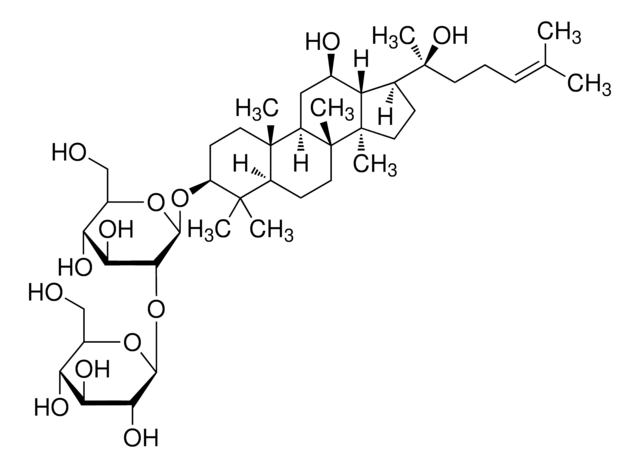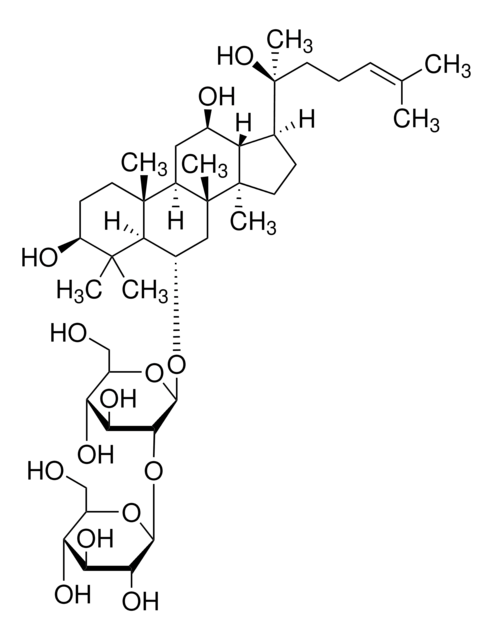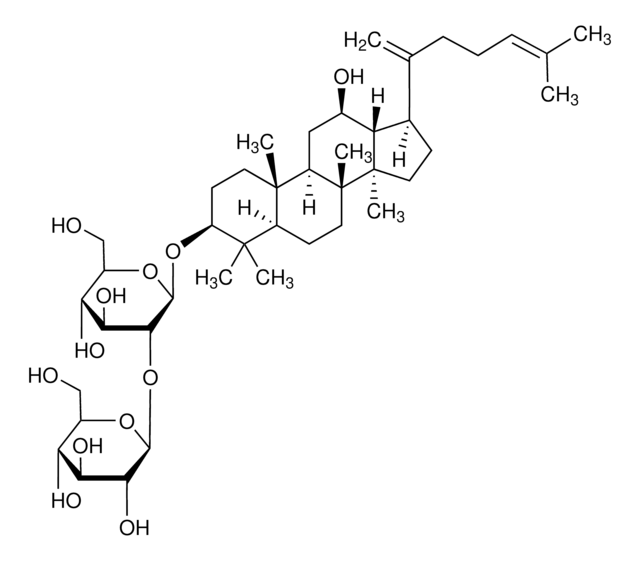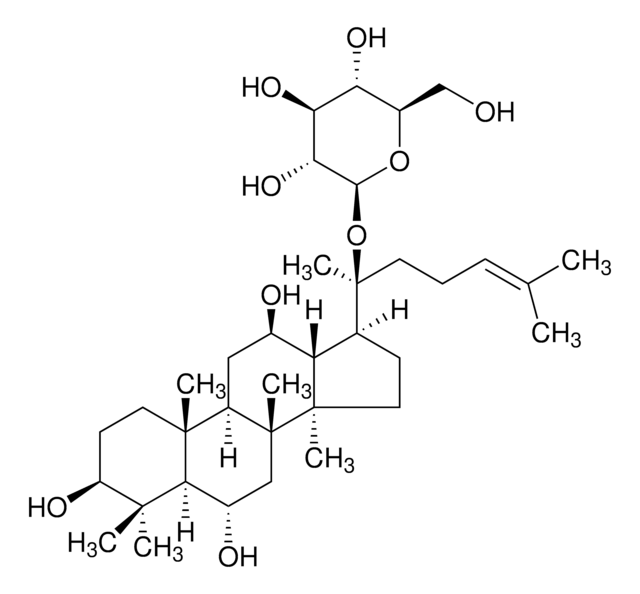08171
Ginsenoside Rg2
analytical standard
Synonym(s):
(3β,6α,12β)-3,12,20-Trihydroxydammar-24-en-6-yl 2-O-(6-deoxy-α-L-mannopyranosyl)-β-D-glucopyranoside, Chikusetsusaponin I, Panaxoside Rg2, Prosapogenin C2
About This Item
Recommended Products
grade
analytical standard
Quality Level
assay
≥94% (HPLC)
shelf life
limited shelf life, expiry date on the label
application(s)
food and beverages
format
neat
storage temp.
2-8°C
SMILES string
C[C@@H]1O[C@@H](O[C@@H]2[C@@H](O)[C@H](O)[C@@H](CO)O[C@H]2O[C@H]3C[C@]4(C)[C@H](C[C@@H](O)[C@@H]5[C@H](CC[C@@]45C)[C@@](C)(O)CC\C=C(/C)C)[C@@]6(C)CC[C@H](O)C(C)(C)[C@H]36)[C@H](O)[C@H](O)[C@H]1O
InChI
1S/C42H72O13/c1-20(2)11-10-14-42(9,51)22-12-16-40(7)28(22)23(44)17-26-39(6)15-13-27(45)38(4,5)35(39)24(18-41(26,40)8)53-37-34(32(49)30(47)25(19-43)54-37)55-36-33(50)31(48)29(46)21(3)52-36/h11,21-37,43-51H,10,12-19H2,1-9H3/t21-,22-,23+,24-,25+,26+,27-,28-,29-,30+,31+,32-,33+,34+,35-,36-,37+,39+,40+,41+,42-/m0/s1
InChI key
AGBCLJAHARWNLA-DQUQINEDSA-N
Looking for similar products? Visit Product Comparison Guide
Related Categories
General description
Packaging
Other Notes
signalword
Warning
hcodes
pcodes
Hazard Classifications
Acute Tox. 4 Oral
Storage Class
11 - Combustible Solids
wgk_germany
WGK 3
flash_point_f
Not applicable
flash_point_c
Not applicable
Choose from one of the most recent versions:
Already Own This Product?
Find documentation for the products that you have recently purchased in the Document Library.
Customers Also Viewed
Articles
In this article we present several HPTLC applications and analytical standards for ginsenosides.
Our team of scientists has experience in all areas of research including Life Science, Material Science, Chemical Synthesis, Chromatography, Analytical and many others.
Contact Technical Service













